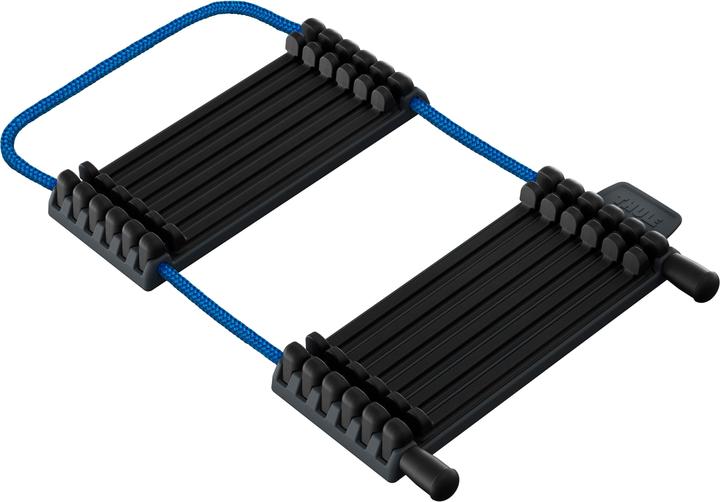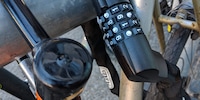

Travelling by bike: a short bike carrier guide
If you're going on holiday and want to take your bike with you, there's no getting around a bike rack. Find out here which carrier is best suited to your car and your needs.
First published on 18/04/2018
There are basically three types of bike rack: rear, towbar and roof racks. Each carrier has its advantages and disadvantages. The decisive factor for your choice is certainly the question of where and how you want to transport the bike and whether the car also fulfils the necessary requirements.
Roof rack
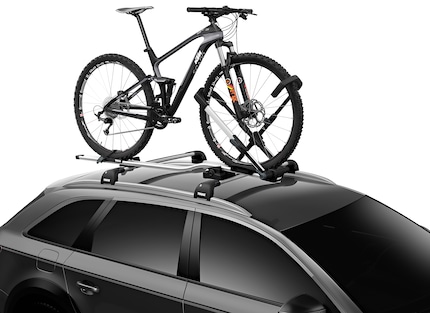
Roof racks have the advantage that they are comparatively inexpensive. Up to four bikes can be transported on a normal car roof. When not in use, the roof racks can be stowed away to save space. Anyone transporting bicycles on the roof enjoys a clear view to the rear and can open the boot without restriction. Compatible roof rack systems are a prerequisite for roof racks. Once you have found and permanently installed your system, you can also use other carriers, such as a ski box.
Disadvantages: The air resistance can increase fuel consumption by up to 35 per cent and affect driving behaviour. In addition, loading is rather tedious, especially with heavy bikes such as e-bikes. When driving into garages and over low bridges, it is also important to pay attention to the overall height, including bikes, in order to avoid accidents.
Rear carrier
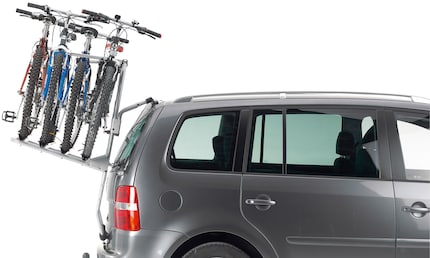
Rear carriers are very solid and stable carriers that are easier to load than roof racks. They are therefore very suitable for heavy bikes. Rear carriers are also a popular solution when no towbar is available. Many models can be folded up and do not need to be dismantled. This is particularly advantageous in a tight garage.
Disadvantages: As the visibility of the licence plate must be guaranteed, rear carriers are mounted slightly higher and therefore cause slight air resistance. Although there are many different systems available, not all carriers are compatible with all cars. There is often little space between the tailgate and the bodywork for the suspension hooks and the spoiler can also pose a problem. Visibility to the rear is also impaired.
Hitch carrier
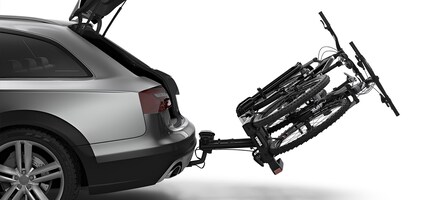
The towbar carrier is the most convenient, but usually also the most expensive type of bike carrier. It can be dismantled extremely quickly when not in use. Thanks to its low height, the towbar carrier lies in the slipstream of the car and does not cause any air resistance. This means that it does not affect fuel consumption. Heavy bikes can be loaded without much effort. Many models also have a tilt function: this allows the rear door to be opened even when bicycles are on the carrier.
Disadvantages: A trailer coupling is a prerequisite for fitting a towbar carrier. If you don't have one, you must first retrofit it and have it checked by the road traffic office. This is relatively expensive. Some car manufacturers offer special carrier hooks that are not towbars. However, their compatibility is not always guaranteed.
If several bikes are being transported, the short distance between the individual bikes can become a problem. Anyone carrying e-bikes or bikes with special geometries/frame shapes may have a problem with the frame clamps.
Where to put the e-bikes
Coupling carriers are usually the only bike carriers that are suitable for e-bikes. As these weigh up to 25 kilograms, the low loading height and the load capacity of the towbar are advantageous. Some suppliers offer accessories such as additional rails that make it easier to move e-bikes on the carriers. If you are transporting a lot of e-bikes, you can reduce the overall weight by simply removing the batteries. Protective covers are available for the exposed contacts. Carriers specially designed for e-bikes offer more space between the bikes.
What you should also look out for
If you want to transport mountain bikes with long wheelbases, such as a 29"-enduro or downhill bike, you should pay attention to long rails (at least 1210 millimetres) and sliding wheel shells. Another trend is plus-size tyres (tyre width 2.4" and more), where long clamping straps and wide rails (77 millimetres) are important. Some manufacturers have integrated a torque limiter to prevent carbon frames from being damaged. Although rubberising is sufficient in most cases, an additional carbon protector can be used to dissipate the clamping pressure. Many carriers and clamp arms are lockable. These locks offer good protection against theft at petrol stations or traffic lights. If you leave your bike unattended on the rack for a longer period of time, I recommend using a thick bike lock.
You can increase the maximum payload of some hitch and rear carriers with accessories. For example, an additional bike rail allows you to carry a third or even fourth bike. With Thule, you can add additional transport volume with the Backspace Cargobox.
Tips for correct loading:
- Always place the heaviest bike closest to the rear.
- Tighten the wheel straps so that the bike does not slip away.
- Clamp arms do not have to be fully tightened. It is sufficient to just tighten them well, as they provide lateral stability.
Practical solutions for everyday problems with technology, household hacks and much more.
Show all









